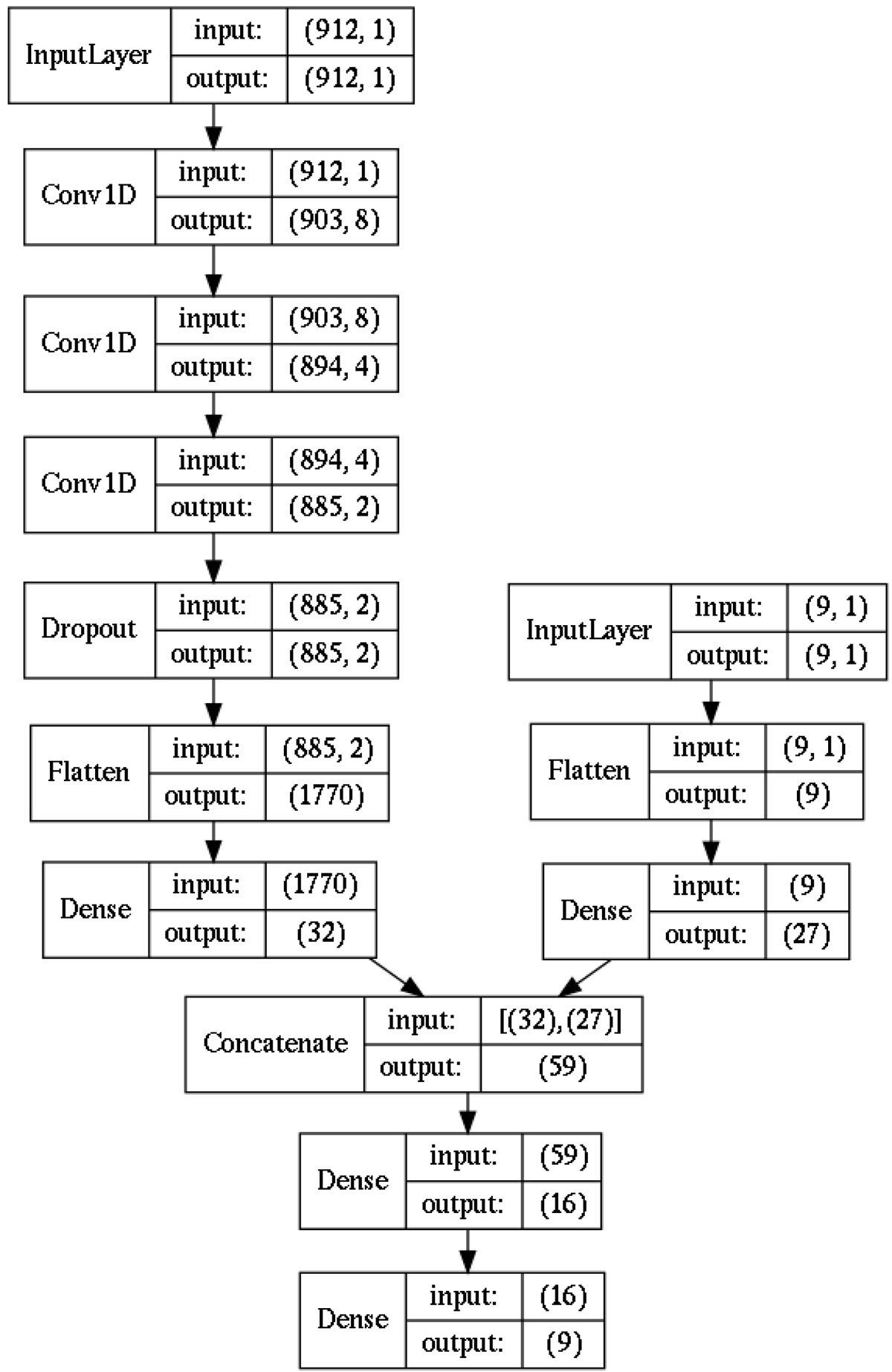Fig. 3.

Representation of the architecture of the Keras model used in this study. The input layer (the spectra) is passed through three steps of convolution (Conv1D). Then, we randomly drop 20% of the neurons at each epoch of training with the dropout layer in order to prevent overfitting. We then flatten the output for the next dense layer (also called a fully connected layer). As an additional input, we include eight absolute magnitudes (2MASS JHKs, ALL_WISE W1&2, and Gaia DR2 G, GBPGRP passbands) and one AV correction (input layer with shape of 9). We concatenate it to the main part of the network in the form of 27 neurons. The fully connected part of the network is then composed of two dense layers. The output is an array of nine parameters (atmospheric parameters and six chemical abundances).
Current usage metrics show cumulative count of Article Views (full-text article views including HTML views, PDF and ePub downloads, according to the available data) and Abstracts Views on Vision4Press platform.
Data correspond to usage on the plateform after 2015. The current usage metrics is available 48-96 hours after online publication and is updated daily on week days.
Initial download of the metrics may take a while.


